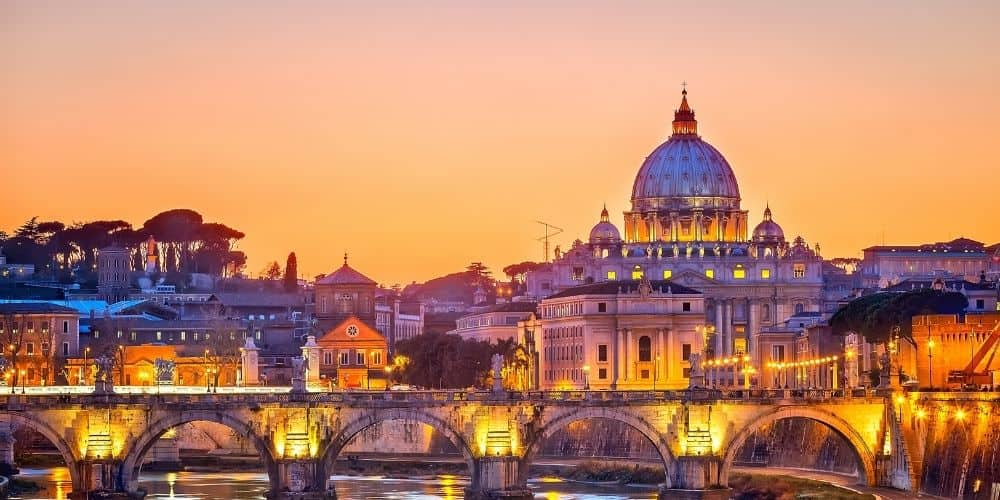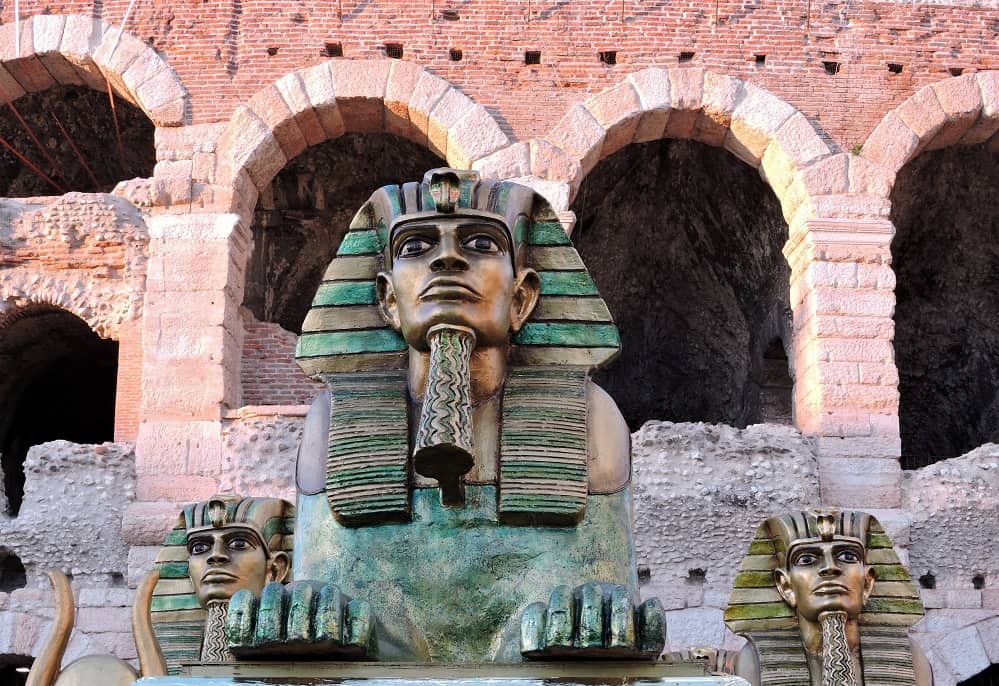Schools of Italian language and culture for foreigners are quite different from “schools” as we normally imagine them. They are in fact cultural centres, obviously specialized in teaching Italian, but are involved with welcoming foreigners on their cultural trip in the Bel Paese and guiding them on their Italian experience, short or long as it may be: students, adults, pensioners, professionals, lovers of music, good food, and art. A vast and heterogeneous audience that can certainly be classified as one of “quality”.
LICET is a national association that includes more than 50 schools, spread throughout Italy, in the most famous art cities or in small villages less a destination of mass tourism. The schools for foreigners meet the needs of those looking in Italy not only to bathe in the most beautiful seas of our islands but also a cultural dive into our history and our tradition: to know Italy from A to Z.

A as in ART

It is well known: Italy preserves one of the richest artistic heritages in the world. Our cultural heritage is so vast that we have ancient works or ruins, some of immense value, which, were they found in other cities of the world, would be their main attraction. Here, on the other hand, being perhaps so near to even more massive monuments, they are almost ignored. How many Italians could say where the colossal Tempio del Divo Claudio is? Few probably. Yet there it is, only a few meters from the Colosseum: but dwarfed between the Colosseum, the Roman Forum, the Arch of Constantine, who notices the neglected Temple of Claudius, only as big as two or three football stadiums?
B as in BOROUGHS

Italy is the country of a thousand bell towers, of a thousand municipalities. And each has its own history, its own precious artistic or naturalistic value, its own adventures to relate to visitors. So go to Castelfranco Veneto and in the cathedral you will find an Altarpiece by Giorgione, you pass through Sansepolcro and you will find a “San Ludovico” by Piero della Francesca. Or stroll along the coasts of Campania and in Baia discover an extraordinary marine and underwater archaeological complex, the remains of the holiday resort most beloved by the aristocrats of ancient Rome.
C as in CINEMA

D as in DIVERSITY

E as in EATING

One can say anything about Italy but not that you do not eat and drink stupendously well. But besides those food and wine specialities now well known worldwide (from lasagna to pizza, from Barolo to Limoncello), the variety of regional and local dishes is so vast that it is even difficult to talk about an “Italian cuisine” since it ranges from caponata Sicilian cheese to Valle d'Aosta fondue. By the way: do you know what the most exported Italian word in recent decades is? It's tiramisu!
F as in FESTIVALS

The great travelers of the past organized their Grand Tour in Italy coinciding with the dates on which the celebrations of the most important local festivals took place: and therefore ideally to be in Venice during the Carnival or in Rome in June perhaps when, for San Pietro e Paolo, Castel Sant'Angelo is all a whirlwind of fireworks (a tradition inaugurated, it seems, no less than by Michelangelo).
But how many other patronal and secular festivals must one not miss? May we mention San Gennaro in Naples, the Festa dei Ceri in Gubbio, San Sebastiano in Syracuse or the Palio in Siena?
G as in GOOD TASTE

Foreign students at Italian schools sometimes have come to Italy driven by the desire to learn our language and consequently our grammar. Yet, sometimes without their realizing it, their journey is often linked to the search for another kind of grammar, the grammar of good taste! Not surprisingly, through their eyes, we are not only the heirs of classicism and the Renaissance: we are also among the most refined fashion and design creators in the world.
H as in HABITAT

It is well known that Italy is a country rich in different environments, from that of the South Seas to that of the Dolomites. But sometimes we Italians ourselves do not realize that this habitat variability makes Italy an extraordinarily rich country in biodiversity: within our borders is the greatest number of different plants and animals in Europe, at least 10% of which is found only in Italy.
I as in ITALIANS

Any Italian - who has been abroad - had noticed that declaring to be Italian often arouses sympathy, on occasion indifference, but rarely hostility. Could it be because of our history as oppressed more often than oppressors? Could it be due to our image often conveyed by art, music, football, and gastronomy rather than by the desire to dominate? Or maybe it is (as a famous twentieth-century Italian politician once said) because of “that humane foundation for which in Italy even the perfidious racial laws in their application at least partially failed?” The fact is that Italians enjoy a good reputation abroad and, confidentially, sometimes even surpasses our credit.
L as in LANGUAGE

When a foreigner is asked why they are studying Italian, of such little importance in international communication, the answer is almost always the same: “Because I like it, because it sounds good, because it is a beautiful language”. As linguists, we, in Italian schools for foreigners, know fully well that there are no beautiful languages nor ugly languages. At most, we can detachedly consider that the high frequency of vowel sounds probably gives the impression of a “beautiful sound”. Which still remains the perception of Italian abroad and is anything but an irrelevant heritage.
M as in MUSIC
The “beautiful sound” of Italian is confirmed by its great adaptability to music and singing. It is no coincidence that we are the homeland not only of melodrama but also of a more recent musical tradition that goes from the soundtracks of Ennio Morricone to the most dated Neapolitan song and dates back even to even more remote times. After all, isn't it said that Emperor Nero, seeing Rome burn, played the lyre humming songs composed by himself?
N as NEWS
Italian schools for foreigners are often surprised by the amount of “returning participants”: there are those who return for two, three, or four years in a row and there are even those who have Italy as a fixed stop on their travels every year, maybe for twenty years or more. What is the explanation? Quite simple really: precisely because of the variety it offers, Italy never ceases to surprise. And then, maybe in the tunnel of a subway line, a hole created perhaps due to water infiltration, or an excavation for the foundations of a building and a discovery is made, sometimes so important as to force scholars to rewrite not only the tourist guides but even archaeology and history books.
O as in OTIUM

The image of the sluggish and lazy Italian is now confined to jokes or stereotypes, even abroad. But the particular relationship of Italians with idleness, idleness understood in the Latin sense of otium, that is, time dedicated to distancing oneself from the daily problems of the negozio (transaction, or shop, from the Latin nec ‘not’ + otium ‘idleness’ ), that exists and resists still today: idleness to rest, but above all to think, to re-create, to reflect and to… philosophize. Of course, the Italian lifestyle is gradually becoming corrupted. But with us, the American way of life has not yet won us over!
P as in PIAZZA

As in a 1960s movie: the town square, the bar tables, the church, the pharmacy, the barber ... a postcard image? Well, all of this is still very much present here. Large shopping malls have not yet managed to replace the plaza, square, or, as is often called, the “piazzetta” as a meeting place for the community. Those who live this reality on a daily basis may not realize how important not losing it is!
Q as in QUALITY

Although the national image sees Italians as not punctual, sometimes superficial, and certainly more oriented towards creativity than rigor, the “brand Italy” is very often synonymous with high quality. And this not only holds true for the gastronomic sector where "produced in Italy" is a guarantee of the highest level, for the clothing and shoe industry (what foreigner has not bought a pair of Italian shoes at least once?) Or for all of the luxury manufacturing. Surprisingly, Italy is also very qualified in the field of precision mechanics: a branch of the industry that has remained the flagship of Made in Italy even in times of the worst economic crisis.
R as in RELIGION

Perhaps because Italy is the homeland of Catholicism it is difficult for foreigners to understand Italians from the point of view of religion: the fact is that the historical proximity to ecclesiastical power turns the Italian idea of the sacred ... very down-to-earth. It so happens that in much more secular countries (we may speak for example of the United States or Great Britain) the "sense of religion", sometimes even implicit in a Constitution, is in at times more evident than in Italy.
S as in STORMY HISTORY
A certain political cynicism and perhaps an excessive disposition to realpolitik and Byzantinism are very Italian characteristics, linked to a long and complex history of foreign or authoritarian domination. However, it is with the history of the last few centuries that the character of modern Italians was formed: a history that in many cases we ourselves do not know or interpret according to schemes often imposed by those who govern for “the sake of peace”. A typical mistake? Imagine our heroes of the Risorgimento as dreamers doomed to martyrdom, almost like images of saints in prayer cards: not true revolutionaries and fighters, often violent, sometimes anarchic, and certainly convinced that “the revolution is not a gala feast”. Of course: it is much more comfortable and reassuring for everyone, we included, to think of ourselves as peaceful, a little timid, and tolerant while we enjoy our pasta.
T as in THEATER OF THE OPERA

When you think of Italian architecture, you usually think more of Palladio's villas than theaters. Yet the Italian theatrical heritage is immense, recall the Farnese in Parma, the Olimpico in Vicenza, the Bibiena in Mantua, the Bellini in Catania, the Regio in Turin, the San Carlo in Naples, the Petruzzelli in Bari, the Fenice in Venice, or the Scala in Milan. Of course, why think of theaters if we can also see the Opera at the Arena in Verona or at the Baths of Caracalla in Rome?
U as in UNUSUAL HUMOR
In an Italian language and culture course for foreigners, perhaps the most ambitious goal is to convey the characteristics of our sense of humor. What is even more difficult today, in a climate of ever encroaching “politically correct" which at its roots springs from irony which, due to our historical characteristics, has to do precisely with “diversity”: regional or provincial diversity, linguistic and dialectal diversity, diversity of religious and sometimes ethical sentiments. So what elsewhere is nationalism in us can sometimes become pure parochialism, what elsewhere is blasphemy here is often superstition, what elsewhere is racism can here be ironically role-playing. On the other hand, if our foul language is 90% characterized by sexual content while that of Germanic peoples is of a more "excrementitious" type, there must be a reason.
V as in VERDANT
Great travellers and writers of the past called Italy the "garden of Europe". And they were not wrong if we think that woods cover almost 40% of the Italian soil. Among other things, with the reforestation policies of recent decades, Italian green areas are expanding.
Furthermore, even the big cities themselves often have more green areas than we might imagine. The urban area of Rome alone, for example, contains 46 million square meters of greenery and Milan, the industrial city, itself contains 22 million. On the other hand, until no more than 150 years ago, cities were often scattered with villas with immense parks and gardens: it is not surprising that even after modern urbanization a certain amount of greenery has survived.
Z as in ZAPPING
Despite the progressive expansion of the use of computers, both to access information and films, television still remains a central element in Italy, of the national economy and also in the daily life of most families: although certainly preferred by the younger generations, Italy, with its low birth rate (one of the lowest in the world) and with an ever higher average life span (we are one of the longest-lived peoples in the world) has many people who are still tied to the more traditional screen. This explains why, politically, the battle for control of public networks is always so heated and sometimes, in the eyes of foreigners, exaggerated: just as Italians often seem exaggerated.
All this, and much more, awaits the foreign visitor to Italy. Visitor not easily defined as “tourist” (which makes us think of the hurried consumer of selfies), nor easily called an “explorer” (which calls to mind an adventurous traveler of the jungle), improperly called "traveler" (because perhaps their journey, albeit long, is limited to the borders of a single village or a single city), droll to call “student” (because the study of the language is only one aspect of the Italian experience).
The Italian language schools for foreigners look after visitors: accompanying them in their discovery of realities that would otherwise be impossible to discover on their own, providing the cultural tools to decode messages and behaviors that may be very different from those of their country of origin, providing the opportunity to experience Italy “as an Italian would” and in many cases offering not only a series of services but also company and friendship: to learn Italy from A to Z.
The article was edited by Roberto Tartaglione, president of the LICET association.
President of the association LICET (Italian Language Culture and Tourism) - https://scuole-licet.it/
Director of SCUDIT (Scuola d'Italiano Roma) - http://www.scudit.net
About the author
Written on 29/04/2021



Associazione Licet
The LICET Schools association, a community of schools in Italy that promote the Italian language, culture and tourism, had the brilliant idea of presenting Italy from A to Z using the 21 letters of the Italian alphabet.